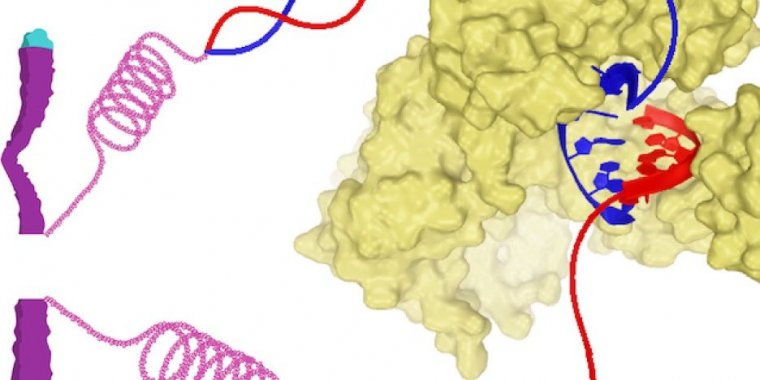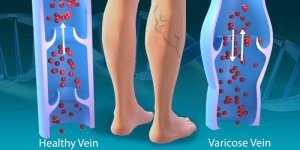| Health / Health News |
DNA repair scheme gets closer look for cancer therapy
Researchers at Rice University and St. Jude Children's Research Hospital in Memphis, Tennessee, took a close look at one of the ways cells repair broken strands of DNA and discovered details that could help make a particular enzyme a promising target for precision cancer therapy.

The structure of DNA polymerase theta, which serves to fix double-strand breaks in DNA (on left). Photo: Chuxuan Li/Gao Lab
Not unlike patching a tire, the job of DNA polymerase theta, also known as Pol theta, is to fix double-strand breaks in DNA, bridging the hanging single-stranded ends and catalyzing DNA synthesis across the break — a process known as microhomology-mediated end joining, or MMEJ.
MMEJ is complementary to two other processes — homologous recombination and non-homologous end joining — that repair DNA double-strand breaks, but with lower fidelity because Pol theta is prone to mutation, insertion and deletion errors.
But therein lies the advantage: MMEJ needs Pol theta to repair a double-strand.
The study reveals for the first time the structural basis of Pol theta-mediated MMEJ, showing how its unique insertion loops help stabilize short DNA binding as it prepares a site for MMEJ repair.
"When DNA breaks, it's very dangerous for the cell, which has to fix it right away," said Yang Gao at St. Jude, who studies the mechanisms of DNA replication. "One break can kill the cell, and cells don't want to die, especially cancer cells."
"One of the most usual scenarios is when patients have a BRCA1 or BRCA2 mutation," he said. When healthy, the genes express DNA-repair proteins, but mutations can trigger breast cancer. "When a patient has a problem with these genes, they can't be repaired through the homologous recombination pathway. They have to go to other pathways."
Gao continued, "Eight years ago, people found that when they knock out Pol theta in normal cells, it will not be a problem. But if the knockout of this protein is in cells with mutant BRCA1 or BRCA2, these deficiencies can be lethal. That's what makes this a very promising drug target. A Pol theta inhibitor wouldn't hurt normal cells, only cancer cells."
Added Michael Cavagnero, a program director in NSF's Division of Physics, "This research is motivated by the search for new ways of treating diseases such as breast cancer, and it illustrates how theoretical calculations based on principles of physics can assist experimental efforts in this highly interdisciplinary and fast-moving area of science." (U.S. National Science Foundation)
YOU MAY ALSO LIKE





